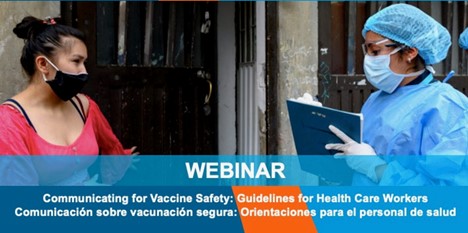
The COVID-19 pandemic has shined a light on the importance of strengthening national capacities in the area of vaccine safety. In order to maintain public confidence in vaccines and health authorities, two-way communication is essential. This form of dialogue allows health personnel and communicators to understand the concerns of the population and to develop strategies that are specific and tailored to the needs of different audiences. In addition, the pandemic has taught us how quickly misinformation can circulate, which, in turn, can damage confidence in vaccines and the people who administer them.
To introduce the new guidelines on communicating about vaccine safety for health workers, to strengthen national communication capacities and to provide a set of useful tools in the daily communication on safe vaccination, including Communicating about Vaccine Safety: Guidelines to help health workers communicate with parents, caregivers, and patients (available here: https://www.paho.org/en/documents/communicating-about-vaccine-safety-gu…). (Note: Please visit https://iris.paho.org/ for updates.)
- Factors that influence the decision to vaccinate, communication strategies for interaction, strategies to improve the vaccination experience.
- Debunking false information, ESAVI communication, communicating with vaccine-hesitancy colleagues
- Online courses and invitation to review other materials.
- Cuauhtémoc-Ruiz Matus, Immunization Unit Chief, PAHO/WHO
- Maria Paz Bertoglia, International Consultant, PAHO/WHO
- Katharina-Sophia Dolezal, Co-author of the Manual
- Desirée Pastor, Regional Immunizations Advisor, PAHO/WHO
